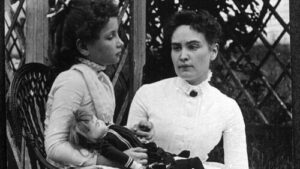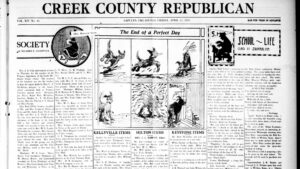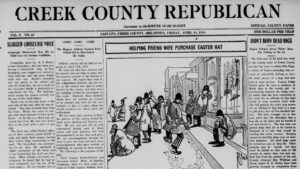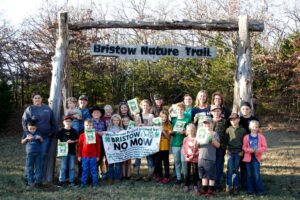Rachel Whitney
Curator, Sapulpa Historical Museum
Thursday, February 29, 1912, Sapulpa Evening Democrat: Interurban Deal Again
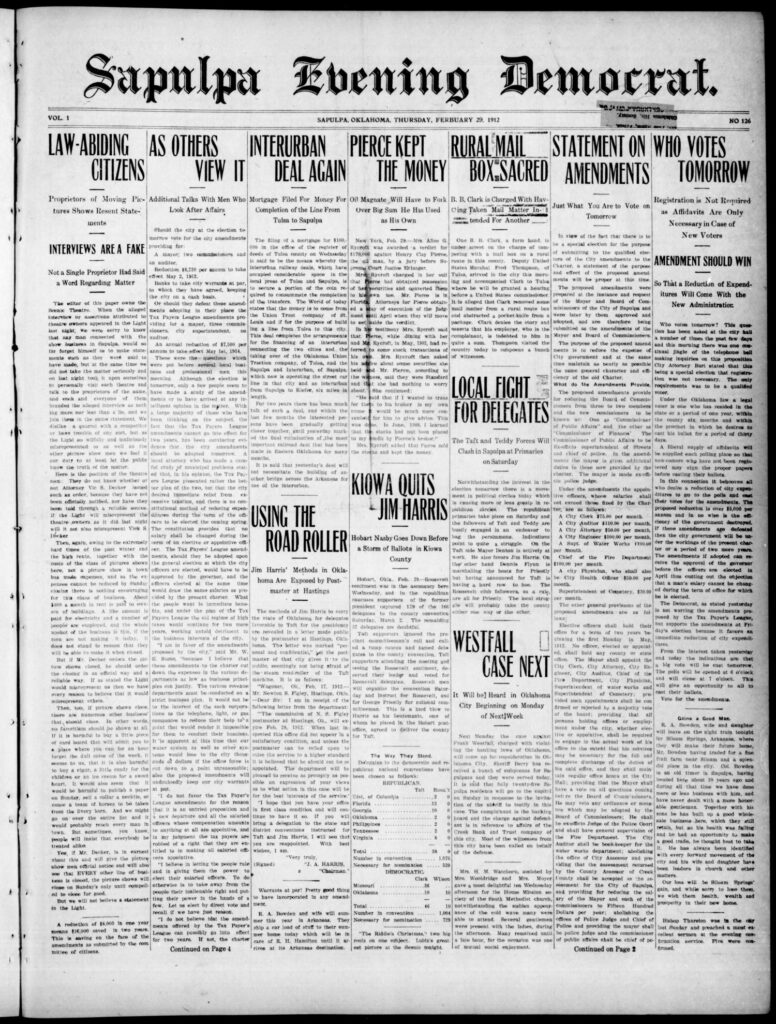
“The filing of a mortgage for $100,000 in the office of the register of deeds of Tulsa county on Wednesday is said to be the means whereby the Interurban railway deals, which have occupied considerable space in the local press of Tulsa and Sapulpa, ls to secure a portion of the coin required to consummate the completion of the transters. The World of today states that the money is to come from the Union Trust company of St. Louis and if for the purpose of building a line from Tulsa to this city. This deal completes the arrangements for the financing of an Interurban connecting the two cities and the taking over of the Oklahoma Union Traction company, of Tulsa, and the Sapulpa and Interurban, of Sapulpa, which now is operating the streetcar line In that city and an Interurban from Sapalpa to Kiefer, six miles in length. Por two years there has been much talk of such a deal, and within the last few months the Interested persons have been gradually getting closer together, until yesterday marked the final culmination of,the most important railroad deal that has been made in Eastern Oklahoma for many months. It is said that yesterday’s deal will not necessitate the building of another bridge across the Arkansas for use of the Interurban.”
Thursday, February 29, 1940, Democrat News: March Winds and Dust on Streets Spell Grime
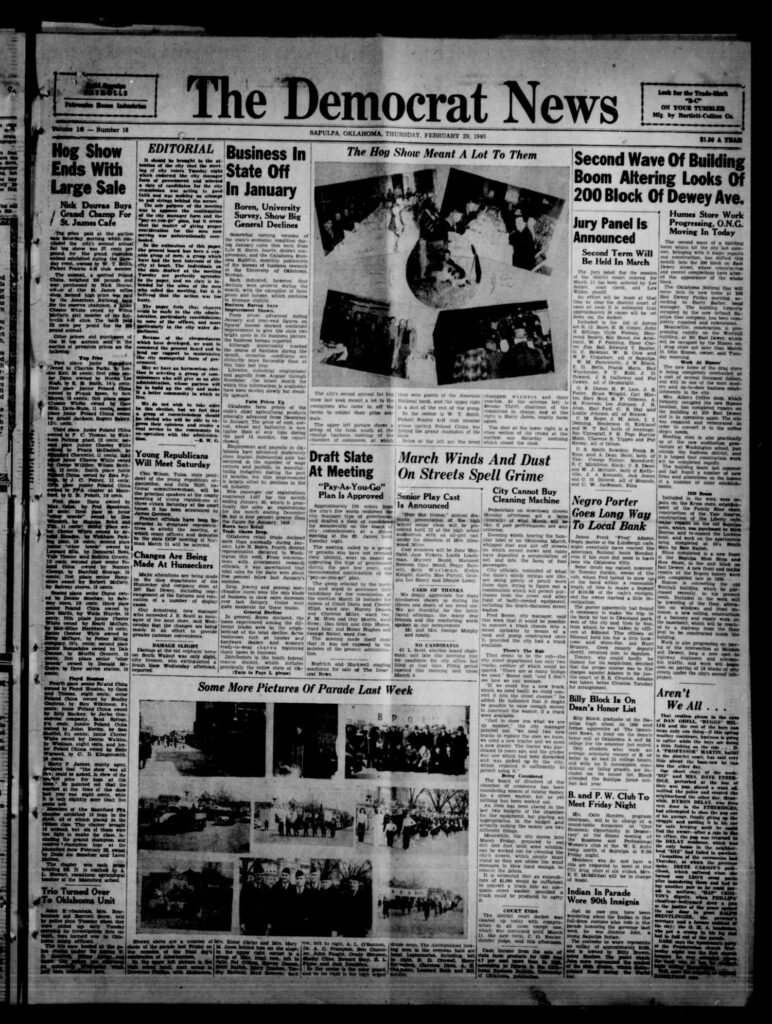
“Pedestrians on downtown streets Monday afternoon got a taste (literally) of what March will be like, if past performances are a criterion. Zooming winds, bearing the familiar label of an Oklahoma March whipped dust and dirt off streets on which recent snows and rains have deposited an accumulation of soil and into the faces of foot passengers. City officials, reminded of what the state’s windy springs are like, are doing plenty of pencil work these days, trying to figure out a combination which will permit purchases from the street and alley fund of badly-needed equipment, including the much-discussed street washer. Fred Boone, city manager, said this week that it would be possible to convert a truck chassis into a street sprinkler by means of a tank and pump constructed onto it, provided the city had a truck available.”
Thursday, February 29, 1968, Sapulpa Daily Herald: If Onions are Here, Is Spring Far Behind?
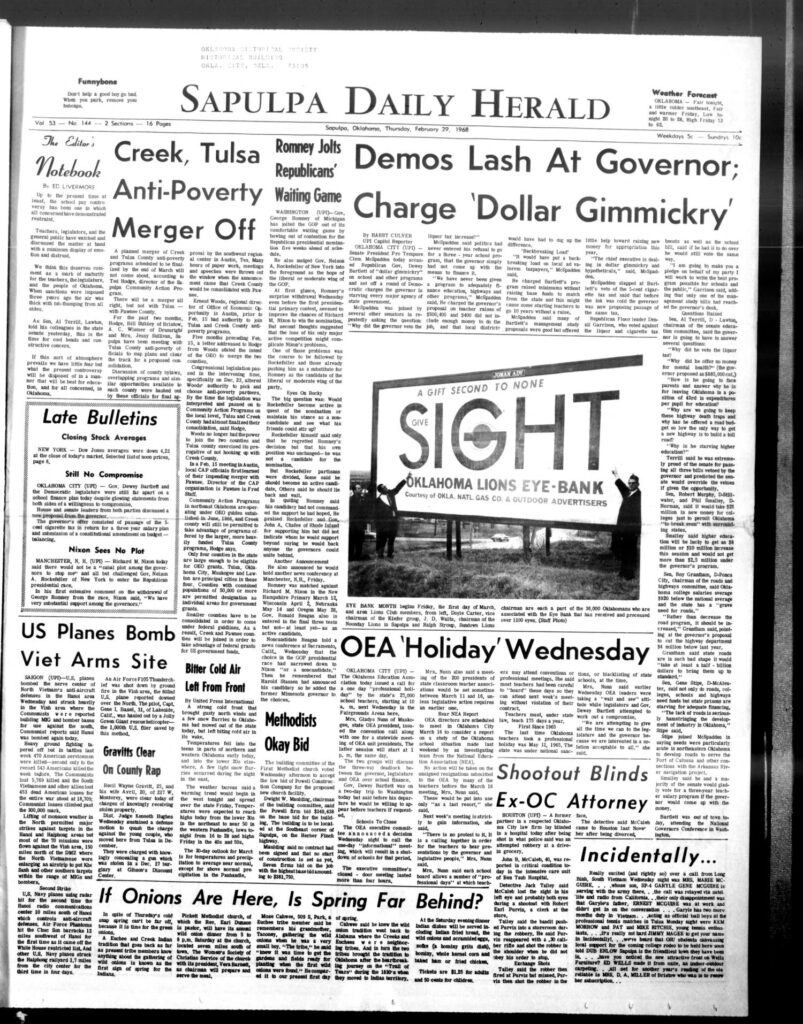
“In spite of Thursday’s cold snap spring can’t be far off, because it is time for the green onions. A Euchee and Creek tradition that goes back as far as present tribe members know anything about the gathering of wild onions is known as the first sign of spring for the Tribes. Pickett Methodist Church, of which the Rev. Earl Dunson is pastor, will have its annual wild onion dinner from 5 to 8 p.m. Saturday at the church, located seven miles south of town. The Women’s Society of Christian Service of the church with its president, Vera Barnett, as chairman will prepare and serve the meal. Mose Cahwee, 509 S. Park, a Euchee tribe member, said he remembers his grandmother, Taconey, gathering the wild onions when he was a very small boy. ‘The tribe,’ he said, ‘knew it was time to get the gardens and fields ready for planting when the first wild onions were found.’ He compared it to our present first day of spring. Cahwee said he knew the wild onion tradition went back to Alabama where the Creeks and Euchees were neighboring tribes. And in turn the two tribes brought the tradition to Oklahoma after the heartbreaking journey on the Trail of Tears during the 1830s when they moved to Indian Territory…”
Thursday, February 29, 1996, Sapulpa Daily Herald: Chief Credits Mannford For Low Crime Rate

“The fact Mannford enjoys one of the lowest crime rates in the state comes as no surprise to Police Chief Bud Reed. Reed said first you start with a great community and then add quality police officers and that makes the job a lot easier. He said at present one of the biggest problems is attempting to maintain a 45 mph speed limit while construction work is underway on Hwy 51 through the city. He said the local motorists are aware of the reduced speeds but between Tulsa and Stillwater create the greatest hazard…”



